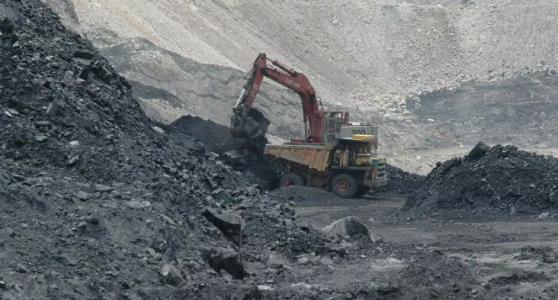Editors
Indians are already paying through the nose for energy as prices of petrol and diesel hit historic highs, propelled by unprecedented taxes. Now, prohibitive rates for electricity loom.
The spot rate for electricity in the power trading exchange touched Rs 20 per unit a little over a month ago, up from Rs 5 not long ago. States with shortages will have to buy electricity from the market at prohibitive costs.
The reason for this: the Modi government has created an artificial electricity shortage during the festival season, which normally sees a high electricity demand. With the opening of the economy post-Covid-19 second wave, power demands were expected to pick up in October. This, coupled with the festival season, would obviously see a large up-tick of power consumption. Currently, there is a shortfall during the evening peak hours of about 7,000 MW, most of it in Punjab, Rajasthan, Jharkhand and Bihar. Many others are staring at impending blackouts.
We must recognise that this shortage is entirely artificial. We have an installed capacity of nearly 390,000 MW. With the current evening peak of about 170,000 MW, not even 50% of our installed capacity, there should not have been any load shedding. Why then do we have a crisis?
This is because of a shortage of coal. As the Power Ministry itself admits, we have a serious shortage of coal stock at the power stations. Out of 135 power stations in the country, the CEA’s Fuel Management Division’s Daily Fuel Report on coal stocks shows that 16 plants with a generation capacity of 17,000 MW have zero coal stock. Another 76 with 98,000 MW capacity have less than four days of coal stock! Plants are supposed to maintain at least 20 days of coal stocks. Why did the power and the coal ministries not coordinate to provide adequate coal stocks with the power stations for this anticipated increase in demand?
We are familiar with the impact of monsoon rains on coal production. The eastern region with many coal mines faces rains and floods in this period. That is why Coal India had asked power plants to create buffer stocks before the monsoons when production falls. Which the power plants, including the NTPC, run by the central government, did not do.
The rise in the price of coal in the international market from $60 per tonne last year to $200 this year has compounded the problem. Tata and Adani’s Mundra station, which depends on imported coal, have significantly reduced their production. It is only the high spot price of electricity – currently running at Rs. 16-20 per unit in peak hour shortages that make it possible to operate plants with imported coal.
India has one of the largest reserves of coal in the world. So why do we have a shortage of coal in the country, particularly for supplying the vital powder sector? Why did the government not plan for the inevitable shortage with the re-opening of the economy, especially with the festival season coming during which India’s power requirements peak? Is it not criminal negligence of the ruling government?
The coal minister Pralhad Joshi has blamed the coal shortage on the increase of the international price of coal and heavy rainfall. Small mercies, he has accepted that there is a coal shortage—something which most of Modi government’s spokespersons refuse to accept—and not blamed anti-national forces and the opposition parties this time for its crisis.
Former coal secretary Anil Swarup, who administered coal sector reforms in the Modi regime, wrote in Bloomberg Quint last year that CIL had Rs 50,000 crore in surplus reserves in 2016. Instead of investing it to increase production, much of it went as dividend to the Centre. It is this systematic bilking of Coal India every year which has led to its inability to expand production. Instead of funding its own development, Coal India has been funding the Modi government’s deficit; or more accurately, funding the tax breaks that the Modi government has provided to the super-rich—the Ambanis, Tatas, the Adanis, the Birlas; and their ilk.
Coal India supplies 85% of India’s domestic coal consumption. The Modi government has been promoting the private sector in coal mining at the expense of Coal India. Following the much-touted coal sector reforms in 2015-16 under Union minister Piyush Goyal, about 80 ready to mine coal blocks were auctioned to power producers. Most of them sat on these assets and did not create new capacity of over 120 -140 million tonnes. The private sector was complacent because global prices of coal were consistently low, incentivising imports over investment in domestic capacity. The bitter truth—hard for the “market gods will do everything” crowd to swallow—is that markets do not work for infrastructure; as we witness with the coal sector again.
For the last two years in a row, Coal India’s production fell, as the Covid-19 pandemic hit the industry hard, so also the demand for energy. But as the economy opened up post the second Covid-19 wave, it did not need rocket science to know that the demand for power would rise, and so also the requirement of coal. What did the Ministry of Power and Ministry of Coal do from July to October to see that coal-fired power plants had adequate reserves?
Why do power plants not maintain stocks, in this case at least 20 days of prescribed inventory, that they are supposed to carry? The answer is simple: inventory is an extra cost. Less the stocks a plant has to maintain, the more its profits. This is the Just-in-Time principle of capitalist production. For individual firms, it is better to have a lower inventory, even if it means lowering production occasionally and impacting others. These are good “capitalist” principles; or the laws of the market that the public sector supposedly does not know.
For the last few years, India had the option of importing coal from Indonesia and Australia to make up for the shortfall of indigenous coal production. Not this year. As the global economy also opens up, the price of coal in the international market has jumped up more than three times. It has gone from $60 to $200, leading to a curtailing of power production from plants set up primarily for using imported coal.
Thus the Modi government has created a new mess in the coal sector, and by extension, in the supply of thermal power. Unfortunately, this crisis will not be confined to those sectors. Higher electricity costs will increase already extant energy inflation caused by high petrol and diesel prices. This could translate to higher economy-wide inflation and affect people’s real incomes. Not good news for an economy which is struggling to recover.
(Article compiled by us, based on articles by Prabir Purkayastha in Newsclick, and M.K. Venu in The Wire.)




